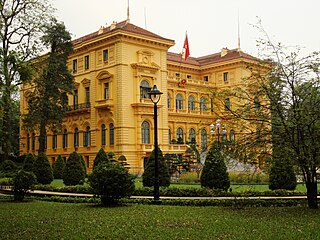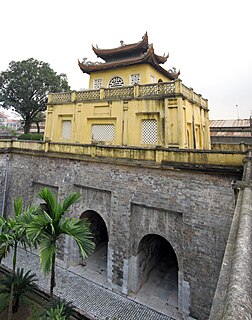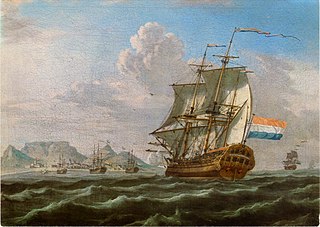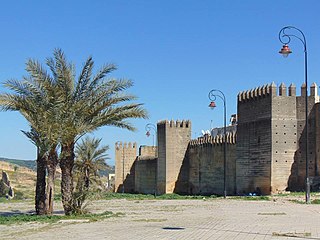| Image | Name | Location | Architectural style/era | Date of construction | Date / period
of demolition / refurbishment | Status |
|---|
 | Archbishop's Palace of Alcalá de Henares | Alcalá de Henares, Community of Madrid | Mudéjar, Herrerian | 1209 | 1939, during the Spanish Civil War | Partially survives |
 | Puente Colgado | Aranjuez, Community of Madrid | Classicist | 1820s | during the Francoist period | Demolished |
 | Balneario da Toxa | Island of A Toxa, Galicia | Galician Regionalist of the time | 1907 | 1945, during the Francoist period | Almost complete refurbishment |
 | Avinguda de la Llum | Barcelona, Catalonia | Modern | 1940 | 1992, during the modern government and autonomies | Partially survives |
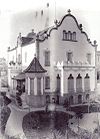 | Casa Trinxet | Barcelona, Catalonia | Modernisme | 1904 | 1968, during the Francoist period | Demolished |
 | Hotel Internacional | Barcelona, Catalonia | Modernisme | 1888 | 1889, during the Spanish confiscation period | Demolished |
 | Palace of the Viceroy | Barcelona, Catalonia | Baroque, Neoclassical, Gothic-Revival | 1668 | 1875, by a fire during the Spanish confiscation period | Demolished |
 | Tower of Saint John | Barcelona, Catalonia | | 1249, rebuilt in 1751 | 1868, during the general Prim dictatorship [1] | Demolished |
 | Tibidabo International Casino | Barcelona, Catalonia | Modernisme | 1909 | 1912, during the Spanish confiscation period | Demolished |
| Former Banco de Vizcaya Building | Bilbao, Basque Country | Eclectic | ? | 1968, during the Francoist period | Demolished |
 | Castle of Burgos | Burgos, Castile and León | Visigothic, Moorish, Christian | ? | 1813, during the Napoleonic French invasion | Ruins survives |
 | Church of San Pedro Mártir | Calatayud, Aragon | Mudéjar | 1368 | 1856, during the Spanish confiscation period | Demolished |
 | Templar church of Saint Mary | Ceinos de Campos, Castile and León | Romanesque | 12th century | late-19th century, during the Spanish confiscation period | Some elements survives and some adorn the town's houses |
| Alcázar of the Caliphs | Córdoba, Andalusia | Moorish | ?, 8th century | 14th century, after the Castilian taking of the city | Part of its structure survives |
 | Cuenca Cathedral façade and tower | Cuenca, Castile-La Mancha | Romanesque, Anglo and French Norman Gothic | 1257 | 1902, collapsed | The main facade was reconstructed in gothic revival style by Vicente Lampérez, but remains unfinished |
 | Gate of the Ears | Granada, Andalusia | Moorish | 12th century | 1884, during the Spanish confiscation period and the ensanches/eixamples | A smaller arc from the accumulated original remains of the Gate of the Ears it survives |
 | Buen Retiro Palace | Madrid, Community of Madrid | Herrerian | 1640 | 1808, during the Napoleonic French invasion | Partially survives |
| Buen Retiro Porcelain Factory | Madrid, Community of Madrid | | 1760 | 1812, by the English during the Napoleonic invasion period | Many porcelains manufactured by the factory survives |
 | Casa del Tesoro | Madrid, Community of Madrid | Christian | 16th century | 19th century, during the Napoleonic French invasion | Demolished |
 | Church of San Salvador | Madrid, Community of Madrid | Romanesque, Herrerian | 12th century | 1868, during the Spanish confiscation period | Demolished |
 | Church of Santa Cruz | Madrid, Community of Madrid | Romanesque | 13th century | 1868, during the Spanish confiscation period | Demolished |
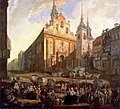 | Churches of the Buen Suceso | Madrid, Community of Madrid | Baroque | 1611, 1868 | 1854, 1975, during the ensanches/eixamples in the Spanish confiscation period and during the Francoist period | Demolished |
 | Convent of the Calced Carmel | Madrid, Community of Madrid | Christian | 1575 | late-19th century, during the ensanches/eixamples in the Spanish confiscation period | Its parish church survives |
 | Convent of Copacabana | Madrid, Community of Madrid | Baroque | 1620 | 1837, during the Spanish confiscation period | Demolished |
| Convent of the Nativity and Saint Joseph | Madrid, Community of Madrid | Baroque | 1700 | 1836, during the Spanish confiscation period | Demolished |
 | Convent of San Felipe el Real | Madrid, Community of Madrid | Baroque | 1547 | 1838, during the Spanish confiscation period | Demolished |
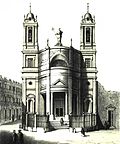 | Convent of San Norberto | Madrid, Community of Madrid | Baroque | 1611 | 1811, during the Napoleonic French invasion | Demolished |
 | Convent of Santo Tomás | Madrid, Community of Madrid | Baroque | 1656 | 1872, during the Spanish confiscation period | Demolished |
 | Gate of Atocha | Madrid, Community of Madrid | Neoclassical | 1769 | 1850, during the Spanish confiscation period | Demolished |
 | Gothic-Mudéjar church of Humanejos | Madrid, Community of Madrid | Gothic, Mudéjar | 14th century | 19th century, 1980, during the Spanish confiscation period and the modern government and autonomies | Demolished |
 | Fiesta Alegre fronton | Madrid, Community of Madrid | Baroque Revival | 1892 | 1965, during the Francoist period | Demolished |
 | Hotel Florida | Madrid, Community of Madrid | Ecleptic | 1924 | 1964, during the Francoist period | Demolished |
 | Noviciado de la Compañía de Jesús | Madrid, Community of Madrid | Baroque | 1606 | 1836, during the Spanish confiscation period | Partially survives |
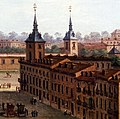 | Palace of the Marquis of Alcañices | Madrid, Community of Madrid | Herrerian | 17th century | 1883, during the ensanches/eixamples in the Spanish confiscation period | Demolished |
 | Palace of Indo | Madrid, Community of Madrid | Neo-Renaissance | 1866 | 1904, during the Spanish confiscation period | Gardens partially survives |
 | Palace of La Moncloa before the Spanish Civil War | Madrid, Community of Madrid | Neoclassical | 1781 | 1940s, during the Spanish Civil War and during the Francoist period | Demolished |
 | Palace of Xifré | Madrid, Community of Madrid | Moorish Revival | 1862 | 1950, during the Francoist period | Elements survives |
| Palace of the Duke of Arión | Madrid, Community of Madrid | Neo-Renaissance | 19th century | 1960s, during the Francoist period | Demolished |
 | Palace of the Duke of Úceda in Plaza de Colón | Madrid, Community of Madrid | Neo-Baroque | 1864 | 1964, during the Francoist period | Demolished |
 | Palaces of the Marquis of Casa Riera | Madrid, Community of Madrid | Neo-Renaissance | early-19th century, 1894 | 1893, 1916, both during the Spanish confiscation period | Part of the gardens survives |
 | Palace of the Marquis of Portugalete | Madrid, Community of Madrid | Neo-Renaissance | 1860s | 1945, during the Francoist period | Demolished |
 | Royal Alcázar of Madrid | Madrid, Community of Madrid | Moorish, Herrerian | 9th century | Christmas Eve 1734, a fire started in the chamber of the French artist Jean Ranc, during the kingdom of the first Bourbon | Part of the painting collection of its interior survives |
 | Former Royal Armoury of Madrid | Madrid, Community of Madrid | Christian | 1565 | 1884, during the Spanish confiscation period | Much of its armoury collection survives |
 | Tower of la Parada | Madrid, Community of Madrid | Herrerian | 1549 | 1714, by a fire caused by Austrian troops during the War of the Spanish Succession | Ruins survives |
 | Windsor Tower | Madrid, Community of Madrid | Skyscraper | 1975 | 2005 | Burnt and replaced with Torre Titania |
 | Casas Consistoriales on Plaza de la Constitución | Málaga, Andalusia | Renaissance | ? | late-19th century, during the Spanish confiscation period | Demolished |
 | Palace of the Orchards of the Bombs | Murcia, Region of Murcia | Baroque | late 17th century | 1960s, during the Francoist period | Complete portal survives |
 | Edificio Castromil | Santiago de Compostela, Galicia | Galician Regionalist of the time | 1926 | 1975, during the Francoist period | Demolished |
 | Castle Alcázar of Segorbe | Segorbe, Valencian Community | Moorish, Christian | ? | 1714, during the kingdom of the first Bourbon | Ruins survives |
 | Roman aqueduct Caños de Carmona | From Carmona to Seville, Andalusia | Roman, Moorish | 1st century BC | 1912, during the Spanish confiscation period | Three sections in Seville survives |
 | Castle of San Jorge | Seville, Andalusia | Visigothic, Moorish, Christian | ¿? | 19th century, during the Spanish confiscation period | Ruins of all sections survives |
 | Gran Café de París | Seville, Andalusia | Modernisme | 1906 | 1950s, during the Francoist period | Demolished |
 | Institute of Hygiene of the Doctor Murga | Seville, Andalusia | Neoclassical | 1907 | 1958, during the Francoist period | Demolished |
 | Palace of Sánchez Dalp | Seville, Andalusia | Andalusian Regionalist of the time | early 20th century | 1960s, during the Francoist period | Demolished |
 | Palace of the Marquis of Palomares | Seville, Andalusia | Andalusian Regionalist of the time | mid-19th century | 1965, during the Francoist period | Demolished |
 | Gate of San Fernando | Seville, Andalusia | Visigothic, Moorish, Christian | 1760 | 1868, during the ensanches/eixamples in the Spanish confiscation period | Demolished |
 | Gates of Triana | Seville, Andalusia | Moorish, Christian | 1588 | 1868, during the ensanches/eixamples in the Spanish confiscation period | Ruins in different locations survives |
 | Gate Real | Seville, Andalusia | Possibly Roman, Moorish, Christian | ? | 1862, during the ensanches/eixamples in the Spanish confiscation period | Remains survives |
 | Triumphal arches for the arrival of Isabel II to Seville | Seville, Andalusia | Neo-Renaissance | 1862 | During the Spanish confiscation period | Demolished |
| Patriarch's Castle | Tarragona, Catalonia | Christian | 13th century | 1813, during the Napoleonic French invasion | Demolished |
 | Bridge of the Exposición Regional Valenciana 1909 | Valencia, Valencian Community | Modernisme, Art Deco | 1909 | 1957, in a flood during the Francoist period | Demolished |
 | Casa de la Ciutat | Valencia, Valencian Community | Valencian Gothic | 1302 | 1860, during the Spanish confiscation period | Many sections survives scattered |
 | Del Real Royal Palace | Valencia, Valencian Community | Moorish, Valencian Gothic | 11th century | 1810, during the Napoleonic French invasion | Remains survives |
| Modernisme square of the City Hall of Valencia | Valencia, Valencian Community | Modernisme | 1931 | 1950s, during the Francoist period | Demolished |
 | Palace of the Countess of Ripalda | Valencia, Valencian Community | Eclectic | 1891 | 1967, during the Francoist period | Demolished |
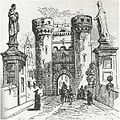 | Gate Nou | Valencia, Valencian Community | Christian | 1474 | 1865, during the ensanches/eixamples in the Spanish confiscation period | Demolished |
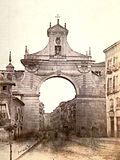 | Gate del Campo | Valladolid, Castile and León | Baroque, Neoclassical | early-14th century | 1864, during the Spanish confiscation period | A Michael Archangel's sculpture placed on it survives |
 | Palace of la Ribera | Valladolid, Castile and León | Herrerian | 1605 | 1761, during the Early Bourbons period | Ruins and elements survives |
 | Upper bodies of the Benedictine church of San Benito el Real | Valladolid, Castile and León | Gothic, Renaissance | 1515 | 19th century, during the Spanish confiscation period | This church survives but its upper two bodies were lopped |
 | Convent of Saint Francis | Vitoria-Gasteiz, Basque Country | Gothic | 1214 | 1930, during the Spanish confiscation period | Remains and elements survives |
 | Portals of Vitoria-Gasteiz | Vitoria-Gasteiz, Basque Country | Christian | ? | 1856, during the Spanish confiscation period and the ensanches/eixamples | Demolished |
 | Second tower of the Plaza de la Virgen Blanca | Vitoria-Gasteiz, Basque Country | Christian | ? | Second half of 19th century, during the Spanish confiscation period | Its clock was placed in the higher other tower of the plaza |
 | Convent of Saint Joseph of Discalced Carmel | Zaragoza, Aragon | Christian | 1594 | 1970s, during the modern government and autonomies | Remains survives |
 | Abbey of Santa Engracia | Zaragoza, Aragon | Visigothic, Gothic, Renaissance | 392 AC | 1808, during the Napoleonic French invasion | Remains survives |
 | Convent of Saint Francis | Zaragoza, Aragon | Mudéjar | 1357 | 1809, 19th century, during the Napoleonic French invasion and Spanish confiscation period | Demolished |
 | Leaning Tower of Zaragoza | Zaragoza, Aragon | Mudéjar | 1504 | 1892, during the Spanish confiscation period | Demolished |
 | Puerta de Toledo | Zaragoza, Aragon | Roman, Christian | ? | 1842, during the Spanish confiscation period | Demolished |



























































































